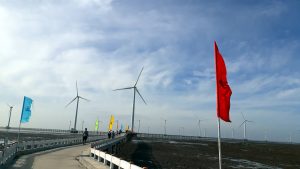Ulrich Volz, director of the Centre for Sustainable Finance at SOAS, University of London, recently made a forceful case that disruptions caused by the COVID-19 pandemic must be met with long-term investment in sustainable solutions. He writes: “Short-term crisis responses aimed at protecting jobs and boosting recovery need to be coupled with longer-term, strategic goals of mitigating climate change and shoring up climate change adaptation and resilience. As much as possible, we need to use economic stimulus and recovery measures to strengthen the resilience of our economies and engineer a just transition.”
The Asian Development Bank estimates that Asia’s infrastructure needs from 2016 to 2030 will exceed $26 trillion, including $14.7 trillion in the energy sector and $8.4 trillion in the transportation sector. Given this enormous demand for infrastructure investment, and as governments experiment with innovative monetary policies in order to fund big fiscal stimulus programs, it would seem prudent to invest in projects that reduce carbon emissions and ensure a more sustainable long-term outlook – something of a Green New Deal for the region.
In principle, aligning infrastructure investment with sustainability is uncontroversial. But on the implementation side there are some real impediments when it comes to actually identifying, financing and building these projects in the region. These challenges vary considerably from country to country. Laos, for instance, had ambitions of becoming the “Battery of Southeast Asia” by building a series of hydroelectric power plants, many funded by China, in order to export energy to its fast-growing neighbors.
Far from becoming a regional hub for clean energy exports, however, these projects and the debt they incurred have helped precipitate a balance of payments crisis that recently forced the country to cede majority ownership of its electricity grid to a Chinese power company. In identifying and structuring sustainable infrastructure projects in Southeast Asia, the details are thus critically important.
Indonesia provides another good example. Despite a wealth of renewable energy resources, and steadily growing domestic demand, the largest economy in Southeast Asia has struggled to add solar and wind power at significant scale. This stems from a combination of factors, including poorly designed policies and regulatory uncertainty. But the structure and political economy of Indonesia’s energy market also creates barriers to entry for renewables that go beyond a simple financial calculus. Even if solar or wind is less expensive than fossil fuels, Indonesia is a net exporter of coal, with large reserves and a politically powerful coal mining industry. The coal lobby is likely to resist the large-scale adoption of new technologies – such as wind or solar – that would eat into its market share.
On the opposite end of the spectrum, there are countries in the region that are primed to accelerate their transitions to clean energy sources. The Philippines has seen fairly rapid growth in renewable energy in recent years, thanks to a feed-in tariff scheme that pays an above market premium, in addition to energy sector reforms that have unbundled the vertical integration in the industry and made markets more competitive. But perhaps the most important factor is that, unlike Indonesia, the Philippines is a net importer of fossil fuels. As a result, securing domestic, renewable sources of energy is a strategic imperative.
Vietnam is also a renewable energy success story, having seen rapid growth in solar power in just a few years. This has been accomplished, as in the Philippines, with an attractive feed-in tariff. But Vietnam’s political class have also made a decision to take on the largely state-owned energy sector and follow through with difficult reforms that finally made renewable energy competitive and an attractive investment option. The underlying drivers of this political decision are complex, but the fact that Vietnam became a net importer of coal in 2015 probably played a big role.
So is Southeast Asia on the cusp of a Green New Deal? It certainly seems like now is the time to align infrastructure investment with long-term sustainability goals, given that the pandemic has created an urgent need for big fiscal stimulus. But in order to maximize the impact of these investments, it is important to take account of variations in recipient countries in terms of state capacity, policy design, regulatory architecture, financing options and good old fashioned political economy. Otherwise there is a risk of misidentifying where the opportunities and roadblocks actually are.

































